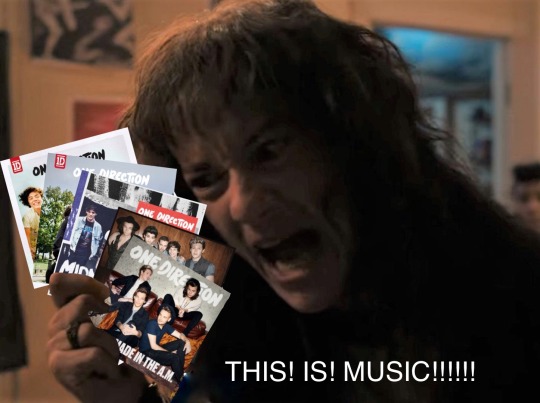student journalist with too many opinions, an unhealthy attachment to my pre-teen interests and britney spears' defense attorney. (she/her)
Don't wanna be here? Send us removal request.
Text
Clueless and Legally Blonde Redefined Bimbo-Core
by Gabriélla Siebritz
Two movies that are now considered cult classics have redefined and reshaped society’s view on femininity (more specifically hyper-femininity), through the lens of two bubbly blondes who love pink.
These two films put its female leads at the forefront of showcasing how women embracing femininity doesn’t make them any less valuable or less smart than the other less “blonde” women featured in each of their respective stories.
Throughout both movies, the leads (Elle Woods in Legally Blonde, played by Reese Witherspoon, and Cher Horowitz in Clueless, played by Alicia Silverstone), are consistently doubted because of their shared blonde heads of hair and love for traditional femininity that they outwardly express.
These two films address the stereotype of “dumb blondes”, and the presumption that women who are overtly feminine must be simplistic bimbos. Cher Horowitz and Elle Woods are two characters who proved that yes, the patriarchy was wrong: you can be both beautiful AND smart at the same time.
Ultra-feminine women depicted in the media are often depicted in a negative way; either they’re a gorgeous demon bombshell using their beauty to commit horrors unto unsuspecting men (think Jennifer’s Body), the mean girl (think Regina George from Mean Girls), the airhead (think of Marilyn Monroe’s characters) or, the opposite to the less-feminine and “more relatable” main character (think Brooke Davis versus Peyton Sawyer from One Tree Hill or Jessica Stanley versus Bella Swan from the Twilight movies).
In short, femininity = negativity. They’re boy-obsessed, mean and “catty”, fashion forward and makeup dependent, and sometimes they’re even murderers.
During the storyline of Legally Blonde, Elle is made the butt of many “dumb blonde” jokes because most assume, upon looking at her, that she is not serious enough about anything other than herself.
From the jump, Elle has been underestimated, most notably by her boyfriend and parents who are meant to love and support her, thinking/assuming that she’s not cut out for law school, which is Elle’s goal throughout the film.
Elle is not dumb (she got into Harvard after all), but others rarely see past her “blonde hair and big boobs”, assuming that because she enjoys shopping and has a fresh manicure, she must be shallow and dim-witted.
At first, Elle’s motives for taking the LSAT’s and getting into Harvard Law are mainly to win back her ex-boyfriend, Warner, played by Matthew Davis. He (fake) sympathetically breaks up with her one night, because according to him, he needs “a Jackie not a Marilyn”, for the future of his career.
After being dumped by Warner for not being “serious” enough (she says, “So you’re breaking up with me because I’m too...blonde???”), the peppy sorority blonde follows him to Harvard Law School - where we get the iconic phrase: “What, like it’s hard?”- to win him back at first, but later it’s to prove him (and others) wrong.
Legally Blonde sources its comedy from juxtaposing Elle’s bright-pink bubbly attitude and wardrobe against the prestigious and intellectual atmosphere of Harvard Law School.
Elle ultimately proves her doubters wrong, not by conforming to their expectations, but by demonstrating her worth while remaining true to herself. She’s shown to be ambitious, driven and dedicated to her studies, all while maintaining the same beauty routines she’s always had.
Aside from Elle, everyone is dressed in muted or neutral colours. For example, Elle’s “rival” at the school, Vivian Kingston, is seen wearing predominately blues, browns and blacks in her clothing while Elle always has a touch of pink and obvious “girly-ness” present in her clothing, whether that’s through the hot pink pleather jacket and skirt she has on upon arriving at Harvard, or simple butterfly clips that keep that her bouncy blonde curls in place.
Elle’s appearance is central to her character because it’s what people use to pass judgement and make assumptions about her. The entire film’s premise is that yes, Elle is a proud blonde, but she’s not a dumb blonde.
And the same thing can be said about Cher Horowitz, the main character from Clueless, another and similar coming-of-age comedy about a self-empowered blonde girl.
Cher also initially seems like a vapid valley-girl, others often seeing her as some “ditz with a credit card” (it’s assumed by other characters that Cher is nothing but an airhead, i.e that she’s “clueless” about life and only cares about herself), but the film shows there is nothing wrong with what Cher likes.
Although Cher’s story is more subtle and complex than Legally Blonde, as Cher does have some flaws, and the film is not built around proving others wrong, the premise is the same as Elle’s story.
While Cher may not be tackling law cases, she (just like Elle) is continuously trying to better herself as a person and do good for others without giving up her personality and the things she enjoys.
Cher has a subtle intelligence of being aware of how the world works without sacrificing her personality. As a rich and privileged white girl, Cher actively steps out of her bubble and works on herself but doesn’t change herself to achieve that.
Like Elle Woods, Cher has a detailed knowledge of fashion, unabashedly enjoys makeovers, and carries a pen with a poofy-pink end, even helping her father with his upcoming trial-casework.
While Legally Blonde and Clueless successfully advocated for the stereotypical blonde girl, other movies not-so-subtly demonize hyper-femininity. Such examples are the High School Musical trilogy and Mean Girls.
Mean Girls’ main character, Cady Herron, is the embodiment of the “not-like-other-girls” trope; she’s not fashion forward like the “Plastics” of the film (the popular, hyper-feminine group of girls), she’s not concerned with her appearance in the way that they are and she simply “doesn’t get it”.
Throughout the duration of Mean Girls, Cady pretends to be one of the Plastics at first to help her friend Janice Ian enact her revenge upon them for bullying her in previous years, but as time goes on and Cady spends more time in the company of Regina George (again, another blonde) and her squad, she becomes just like them.
She becomes obsessed with a boy, obsessed with her appearance, unconcerned about her academics, and becomes a horrible friend to Janice and Damian.
It isn’t until she denounces the world of hyper-femininity and reverts back to who she previously was, that she is viewed as a good person.
Regina George (the supposed villain of Mean Girls) and Sharpay Evans, the antagonist of the High School Musical movies are both young, blonde girls who have a bright wardrobe and outwardly show an interest in hair and makeup; both of these characters are shown as “evil”.
Sure, they haven’t been the nicest people but Sharpay is clearly ambitious and driven towards her dreams and goals of being on Broadway, and Regina (although scheming and malicious at times) was quite a smart person - in my opinion - in how she manipulated others. Let’s also not forget that Regina isn’t the only villain; Janice and Cady were just as bad.
The abovementioned female characters throughout this essay all proudly showcase their girly-ness as not something to overcome, but rather something that can be embraced. Another great example is the Barbie Dolls franchise; Barbie has over 200 careers, all while maintaining her signature pink colour palette.
There is no need to demonize femininity in the media. Shockingly, women can be many things at once.
11 notes
·
View notes
Text
just a girl who was only meant to exist to put on lip gloss and read books. yet was tragically forced to do other things
5K notes
·
View notes
Text
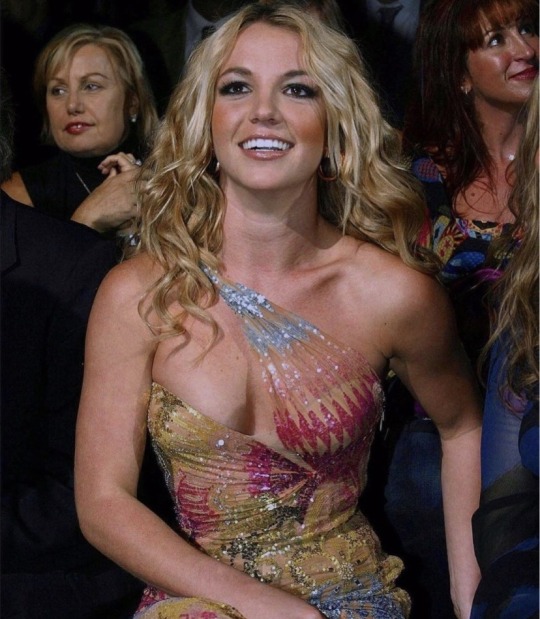

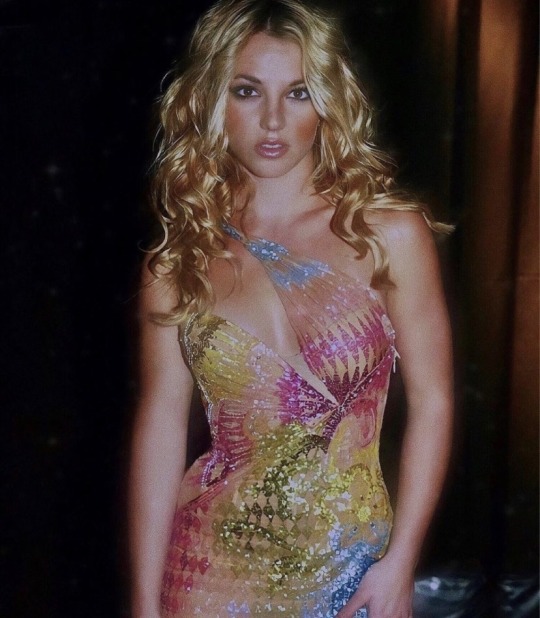
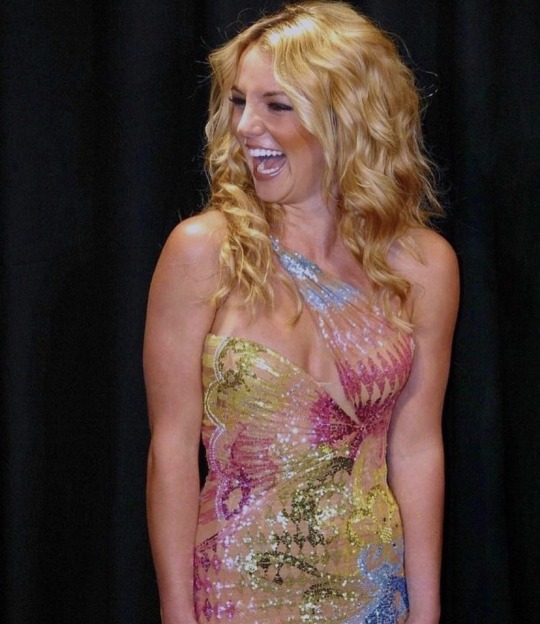
Versace, Versace, Versace. Britney is such an icon.
2K notes
·
View notes
Photo

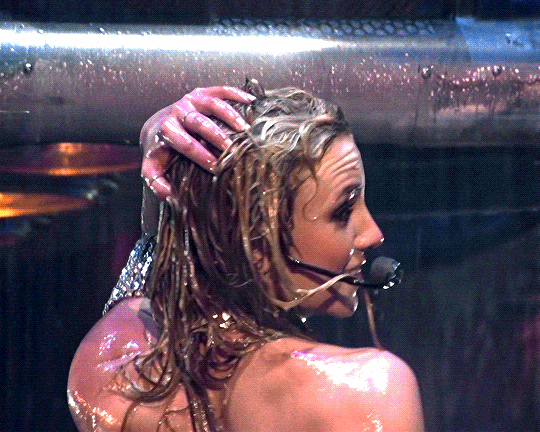




Britney Spears Live from Las Vegas (2002)
7K notes
·
View notes
Text
#FreeBritney: Mental Health in the Media
By Gabriélla Siebritz
Mental health – a common topic of conversation but still with a stigma attached to it like a magnet to a fridge. Mental health conditions are on the rise, and with more people speaking out about their experiences, a spotlight is directed at this very real issue of health and wellness, especially when celebrities already in the spotlight come forward. Despite the good speaking out does, the depiction of mental health via the media is not always accurate, or helpful in debunking negativity.
In 2019, the internet buzzed as attention was brought to pop icon, Britney Spears, birthing the #FreeBritney movement started by the singer’s fans. Britney’s private life has been on full display since the late 90s, building pressure like water rapidly boiling on a stove, and eventually spilling over – but only Britney was burnt.
Beginning in 2008 as another “girl gone wild” story, Britney was placed on a three-day psychiatric hold on two separate occasions. Britney is no stranger to challenging mental health – her infamous public “breakdown” depicting the shaving of her own head and later attacking a paparazzi vehicle with an umbrella, came at a time when a sequence of personal life events took place, including her divorce from Kevin Federline resulting in the lost custody of their shared children, as well as the daily invasiveness of paparazzi.
Following the second psychiatric hold, Britney’s father James “Jaime” Spears, filed a petition to launch a temporary conservatorship, made permanent that year. The conservatorship’s aim was to handle Britney’s finances and personal affairs, claiming she couldn’t competently care for herself due to undisclosed mental health issues, essentially prohibiting control over her everyday life.
Instead of getting Britney the help she needed, the media shamed and harassed her enormously. In a recent documentary from The New York Times titled “Framing Britney Spears”, viewers retrace the origins of Britney’s rise to fame, the abusive conservatorship and the media’s cruel impact on her mental health. Labelled as a “party girl”, tabloids and television blasted Britney’s darkest moments as a tell-all story, humiliating and making mockery of her downfall by tempting potential buyers and viewers with an exclusive look into her “emotional cry for help”.
Because of her public outcries, a magnifying glass was placed on Britney’s motherhood and sexuality, citing her as unfit and failing, adding to the stigma of mental health. Although numerous documentaries have been made highlighting the rise and fall of Britney Spears and gaining support from viewers, in some part the retelling of her toughest moments influences the perception of mental health.
Many other female celebrities have similar experiences with the media. It’s almost expected for young stars in Hollywood to go “rouge”, becoming the butt of countless jokes in various forms of media. Amanda Bynes is also under a conservatorship which began when her drug use became public after she tweeted in 2014 about her mental health struggles with bipolar disorder; later on which made her incoherent to make decisions, according to Lauren Anderson from Showbiz CheatSheet.
Amanda’s increasing erratic behaviour due to her mental health was documented and mocked in the media, essentially humiliating her – much like Britney Spears. Hannah Jane Parkinson from The Guardian writes that consistent ridicule and mistreatment of mental health in media is often accompanied by a “disingenuous sense of caring.” Both Britney and Amanda make headlines after a “breakdown” with covers reading “emotional cry for help” and “sobbing in public”, but the insensitivity of their situations is obvious when they’re called “crazy” in the same breath.
On the other hand, what’s common is often glamourized and struggling mentally is becoming a trend – if it hasn’t already. Hannah Jane Parkinson writes once again that the narrative of mental health issues as “an artsy fashion accessory” is just as dangerous as the bullying, as it contributes to the stigma responsible for actual deaths. Faking a mental illness takes away from those actually struggling, adding onto the stereotype that mentally ill people are lying for attention.
Framing mental health struggles as something to be ashamed of while also glamourizing and disguising it as a result of “wild partying”, adds to the stigma. The media’s impact is significant, and how serious issues are framed is important.
0 notes
Text
how am i supposed to relax when there are things
79K notes
·
View notes
Text
Why does my brain gotta be so dramatic like shut up and sit down we’re all sick of your shit already
20K notes
·
View notes
Text
Need the ocean to wash my brain smooth like sea glass
22K notes
·
View notes
Text
"this filter will show you if your teeth are yellow" "this filter will show you if your nose is perfect" "this filter will show you if your face is symmetrical" "this filter will show you if your lips are big" how about if we all blew up our phones forever
112K notes
·
View notes
Text
fangirls are the backbone of our society & it’s time we treated them as such
by Gabriélla Siebritz
we all have our faves - in music, movies, art, literature - they exist everywhere. it’s undeniable that being a fan is a universal experience, no matter what your personal taste may be. you might not be a superfan of mega pop singer Ariana Grande, but that might be because your interest lies with award-winning actress Zendaya. you might not enjoy K-Pop band BTS, but you might enjoy the soccer team Liverpool. whatever tickles your fancy and keeps you glued to screens during award show seasons and Premier Leagues; the point is we all have our celebrity bias’.
Within the realm of pop culture, which only grows larger each day because of the Internet Age, fangirls are a well-known concept a lot of people find themselves grouped in. You might think fangirls are a thing existing only in our modern society, but actually (as many fangirls have pointed out in defense of themselves, as they should) being a fangirl has spanned decades already.
Defined by the Tampa Bay Times as “Fangirl; (n) a female often in her teens who is exceedingly infatuated with a band/person/movie/book, extremely recognizable when traveling in groups, who can reach such delirium when in contact with band/person/movie/book or other fans that it appears she may spontaneously combust.” This definition isn’t far off - simply looking at the rapidly growing fanbase of One Direction alum, Harry Styles, they are easily recognizable: they wear the singer’s merchandise proudly as if it’s a second skin, they spend whatever amount of money is necessary to see him live in concert, dress up beautifully in a way that is instantly associated with Styles’ and his unique fashion choices, their Twitter accounts are essentially a shrine for him and their bedroom walls are adorned with his vinyls and posters (recently updated to match his latest album Harry’s House, of course).
Existing for decades already, fangirls were a thing during the time of Elvis Presley and later on, The Beatles. If you really think about it, One Direction and The Beatles are essentially the same thing, just different in sound and time periods. But, for some reason, The Beatles is far more respected, considered to be an indication of a good taste in music, and yet the same can’t be said of One Direction and especially their fans. Considered childish and immature, listeners of One Direction - largely made up of teen girls during their active years who have grown up with the band - have consistently been ridiculed because of something they enjoy. They’re considered silly and “crazy” (a term used often when describing women) and they definitely aren’t taken seriously. And yet, it’s these fangirls that propelled these male artists into the chart-dominating fame they acquired which is still talked about to this day.
Harry Styles himself even said in 2014 that One Direction and The Beatles have very similar stories. “And, to be honest, that really was like us. Stepping off the plane, the girls, the madness. It was exactly the same as when we got there -- just 50 years earlier." Just like the timeless British boyband before them, One Direction has a lasting legacy almost seven years after the band’s monumental split in 2015.
Before there was the One Direction Infection, there was Bieber Fever. And just like One Direction and their fans, Beliebers (fans of Justin Bieber) were never taken seriously. Not only were the fans mocked relentlessly for enjoying the singer’s music, but so was he. It was a never-ending stream of online hate and discourse for the artist for years which seemed to never end, until suddenly we find ourselves on TikTok where “old Justin hits different.” A change of tune, going from hate to praise, is not uncommon especially on the platform that is TikTok. It’s now become valid to enjoy Justin Bieber and One Direction’s respective music, and even books and movies like the Twilight Saga are openly enjoyed, despite the hate they received years prior at the time of their individual premieres. All the aforementioned examples were made popular by the interest teenage girls took in them, so why are they (the girls) not celebrated (or at least not mocked)?
Young women’s interests are constantly invalidated, no matter what that interest is. Some are considered “too girly” and is immediately written off as trivial and unimportant; other interests, although aligning with the interests of their male peers, aren’t taken seriously either no matter how much a girl enjoys it, knows about it, practices it. Nothing is valid - if you like astrology, you’re thought of as stupid for believing in the stars although there are studies dedicated to it, but because it’s something predominantly enjoyed and understood by women, it’s thought of as meaningless; if you like video games or sports then you’re forcefully trying to be “one of the boys” even though boys say they want the “cool girl” (we all remember the Cool Girl Monologue Rosamund Pike delivered in Gone Girl (2014) and how detrimental it is to ourselves as women to be a Cool Girl); if you enjoy wearing makeup then you *must* be insecure but if you don’t wear any then you’re not taking care of your appearance; self-care like face masks and bubble baths are all practiced out of vain, according to the minds of men and being talented in the kitchen and enjoying the creation of a meal or dessert is something you *need* to be good at, but not too good in case you shine in the male-dominated industry of being a chef.
We’re either pretentious or trying too hard or not trying hard enough or simply being crazed fangirls who don’t know what they’re talking about. These interests young women indulge and nurture themselves in is almost always immediately written off as less than, and yet, men are allowed to act irrationally and display their interests loudly and proudly without any judgement. Just take a look at any sporting event.
It’s time to admit that fangirls run the world and they deserve the recognition.
1 note
·
View note
Text
girl power (or rather the lack thereof)
This documentary was created with the aim of sharing experiences among young women that shouldn’t be relatable, but unfortunately are. The Female Experience, although beautiful in many ways, is also ugly and terrifying. One source of terror comes from men in the way they harass, gaslight and torment us.
I interviewed six girls (myself included) with the hope of putting the universal feeling of powerlessness we often carry with us into a decent audio-visual representation. I hope I did a good job.
Thank you for watching. :)
https://youtu.be/HmME9mTusQE
0 notes
Text
all i want is to be well-read, well-spoken, and well-loved.
78K notes
·
View notes
Text
making bad art and dressing weirdly and collecting random things and listening to silly music is actually so important
57K notes
·
View notes
Text
this blog is a support group for girls who think they’re being annoying no matter what the context is
42K notes
·
View notes
Text
the only things im good at are being a hater and knowing what song is playing 2 seconds after it starts
909 notes
·
View notes
Text
the power behind sad girl music
by Gabriélla Siebritz
My introduction to “sad girl music” - solemn breakup anthems, deeply metaphorical self-reflection ballads, angry girl power melodies - was brought to me on the pink iPod I received one Christmas as a gift at the tender age of eight. Some of the first few songs I had downloaded (with approval from my mom) were Leave (get out) by the iconic 2000s singer Jojo, Complicated by the legendry Avril Lavigne and Behind These Hazel Eyes by the American Idol herself, Kelly Clarkson.
From the get-go it seems, I was destined to be a feelings type of girl. Internally my emotions were loud, before eventually spilling over into my reality.
As my tastes and personality developed as I grew, I discovered my love for songs that have a melancholic and somewhat dramatic touch to it. I love music that makes me stop, pause the music and sit with the lyrics, accompanied by visuals that I get to analyse and dissect - I eagerly want to dive headfirst into a rabbit hole of metaphors and Easter eggs cleverly left behind by the artists I admire.
From Avril Lavigne, came Taylor Swift; although, admittedly I wasn’t a fully-fledged Swiftie until recently. And now, here I sit, with my Spotify open and the voice of Taylor, along with the voices of Lorde, Lana Del Rey, FKA Twigs, SZA, Mitski, Billie Eilish and Olivia Rodrigo, to name a few, filling up my room. I've always found it satisfying to scream along to lyrics, even if the situation penned by these singers doesn’t always apply to me.
Music is open to interpretation after all, so while I might not have had the same tumultuous relationship Taylor Swift sang about in her ten minute song All Too Well (Taylor’s Version) or knowingly been in a damaging relationship like Mitski was in Washing Machine Heart, or begging not to share the love I have with my partner with outsiders invading the relationship as FKA Twigs did in her song Cellophane, their words still ring true and tug on my heartstrings, urgently pulling at me to listen on repeat and find ways to relate it to myself or anything else I find joy (and sadness) in.
SZA's song, Normal Girl, is told from the singer’s perspective of being in love with someone she can’t have because she doesn’t fit or measure up to his standards, according to an article written by Todayville. Unrequited love isn’t a brand new concept, but these words coming from a Black woman was made relatable for other women of colour, including myself.
She beautifully sings lyrics such as “wanna be the type of girl you take home to your mama / the type of girl I know your fellas they’d be proud of” - SZA is specifically talking about how she doesn’t fit into society’s ideals and therefore doesn’t fit into the box of beauty that the guy she’s in love with has built. Feeling out of place is a common experience for many of us, but different chords are struck as a woman of colour navigating a world of white femininity and white beauty standards.
One of my favourite things to do is to create playlists based on anything I'm currently enjoying. for example, I've made playlists relating to my favourite tv shows, like the cultural resets that were Gilmore girls, The Vampire Diaries and Pretty Little Liars.
As I previously mentioned, I might not be able to relate to every heartbreak the aforementioned artists have written and sung about, but when I listen to a song I make connections between the lyrics and these fictional characters I find comfort in. Almost every Taylor Swift song can effortlessly be used as narration of the Gilmore girls’ plot, proving that sad girl music serves and performs well in both the real and fictional worlds.
Sad girl music doesn’t only explore love and the loss that comes with it, but also offers perspective on the world from multiple eyes. My first introduction to sad girl music was at eight years old - I had little to no experience with love or the world at the time, but the music touched me nonetheless. as Harper’s Bazaar writer Laia Garcia-Furtado put it, “it wasn’t long before I was enveloped in the universe of Sad Girl Music, a (derisive) term that some of the most brilliant female singer-songwriters in music history have been saddled with—women whose songs articulate the particular feeling of living in a constant state of awareness that the world is not a hospitable or fair place for anyone who refuses to serve the interests of the patriarchy.”
It might be confusing to some (older generations, maybe) to hear that listening to sad girl music while sad to make us feel even more sad is a daily practice for a lot of us, but it brings comfort.
It covers us like a blanket of melancholy, allowing us to feel our feelings; acknowledge and recognize them while reveling in the satisfaction that somewhere, somehow, an artist was able to wiggle their way into our special and individual minds as listeners and find just the right ways to scratch the itch of the ever-present question: why? They’ve found ways to gather our thoughts and feelings, wrap it in a bow of lyrical genius and present the gift of sad girl music.
7 notes
·
View notes
